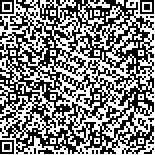| 摘要: |
| 探究横带髭鲷(Hapalogenys analis)的种质资源情况以及群体的遗传多样性和遗传结构, 对于其增养殖实践尤为重要。微卫星分子标记在研究物种种质情况及遗传信息方面有很大优势。采用基因组survey测序方法开发横带髭鲷微卫星位点, 结果表明, 横带髭鲷基因组大小为543 Mb; 微卫星位点丰富, 共检测到280 378个完美型微卫星位点, 相对丰度为415.17个/Mb。二核苷酸重复是最丰富的微卫星类型(56.05%),其次为单核苷酸(29.20%)、三核苷酸(10.28%)、四核苷酸(2.99%)、五核苷酸(1.03%)、六核苷酸(0.45%)重复, 短序列重复类型占95.53%。重复单元中A/T, TG/CA为优势重复单元, 分别占总微卫星位点数的22.37%和21.98%; 10次重复和6次重复的微卫星位点数量最多, 占横带髭鲷基因组微卫星总数的14.60%和12.46%。利用筛选出的20对多态性微卫星位点扩增一个供试群体进行群体遗传学检测。结果表明, 各位点等位基因数从5到13不等, 均值为8.75个; 平均观测杂合度(Ho)和期望杂合度(He)分别为0.808和0.863; 多态信息含量(PIC)均值为0.826, 且均大于0.5。经Bonferroni校正后有5个位点显著偏离哈迪-温伯格平衡(P<0.001); 有4个位点存在无效等位基因。研究结果中的微卫星位点可用于今后横带髭鲷遗传育种和群体遗传学的研究。 |
| 关键词: 横带髭鲷 基因组survey 微卫星 |
| DOI:10.11693/hyhz20221000281 |
| 分类号:S965; Q953; Q789 |
| 基金项目:浙江省重点研发计划项目,2021C2047号;浙江省“三农九方”科技协作计划项目,2022SNJF073号;浙江省科技厅院所专项,HYS-CZ-202208号;舟山市公益类科技项目,2021C31012号,2022C31056号 |
附件 |
|
| ISOLATION AND ANALYSIS OF HAPALOGENYS ANALIS MICROSATELLITES BY GENOME SURVEY |
|
LIU Tao1, CHEN Bing-Jie2, SHI Hui-Lai3, PING Hong-Ling3, ZHANG Tao3, QU Yin-Quan1, GAO Tian-Xiang1
|
|
1.Fishery College, Zhejiang Ocean University, Zhoushan 316022, China;2.Cheung Kong School of Journalism and Communication, Shantou University, Shantou 515063, China;3.Zhejiang Province Key Laboratory of Mariculture and Enhancement, Zhejiang Marine Fisheries Research Institute, Zhoushan 316021, China
|
| Abstract: |
| It is important to explore the germplasm resources, genetic diversity, and genetic structure of Hapalogenys analis for its breeding research. Microsatellite molecular markers have great advantages in studying germplasm and genetic information of species. Genome survey sequencing was used to develop microsatellite loci. The results show that the genome size of H. analis was 543 Mb. A total of 280 378 perfect microsatellite loci with a relative abundance of 415.17 per Mb were detected. The dinucleotide motif was the most abundant microsatellite type (56.05%), followed by mono- (29.20%), tri- (10.28%), tetra- (2.99%), penta- (1.03%), and hexanucleotide repeats (0.45%). The short sequence repeats accounted for 95.53%. A/T and TG/CA were the dominant repeat units, accounting for 22.37% and 21.98% of the total number of microsatellite loci, respectively. Among those microsatellite motifs, the copy number of repeat dominated by 10 and 6, accounting for 14.60% and 12.46%, respectively. In addition, 20 polymorphic microsatellites were isolated to amplify a sampling population. The results show that the number of alleles per locus ranged from 5 to 13 and the mean allelic richness was 8.75, the mean observed heterozygositiy (Ho) was 0.808, and the expected heterozygosity (He) was 0.863. The mean polymorphic information content (PIC) was 0.826, and all of them were above 0.5. After the Bonferroni correction, five loci were deviated significantly from the Hardy-Weinberg equilibrium (P<0.001). And four loci were involved in PCR amplification of null alleles. The microsatellite loci of genome will be applied in the future study of genetic breeding and population genetics in this species. |
| Key words: Hapalogenys analis genome survey microsatellites |
